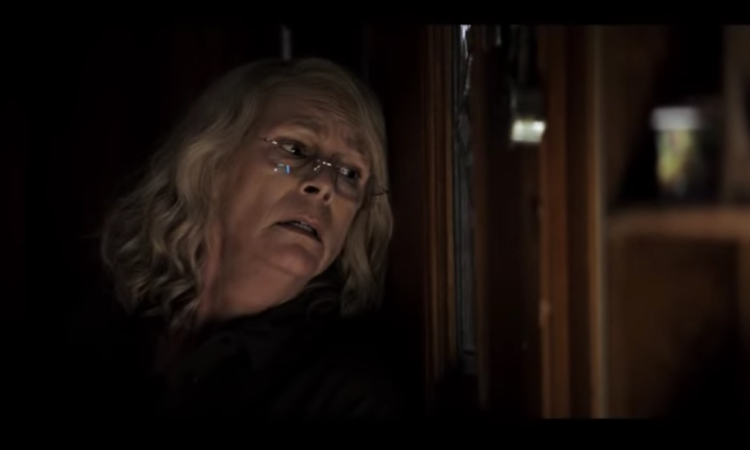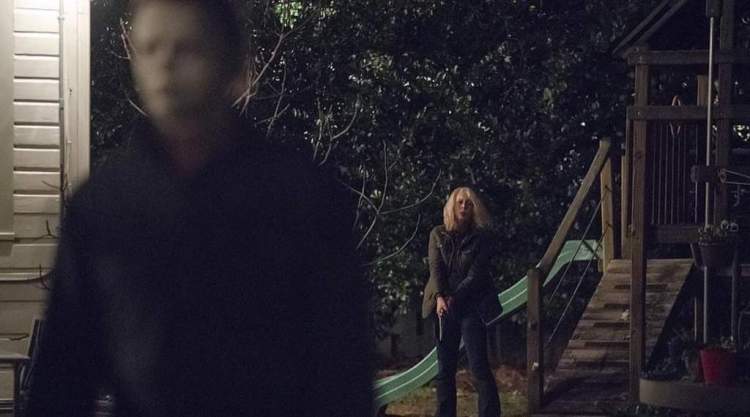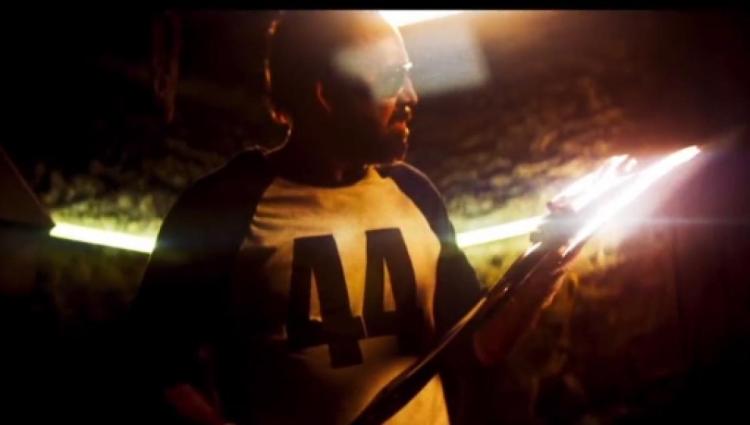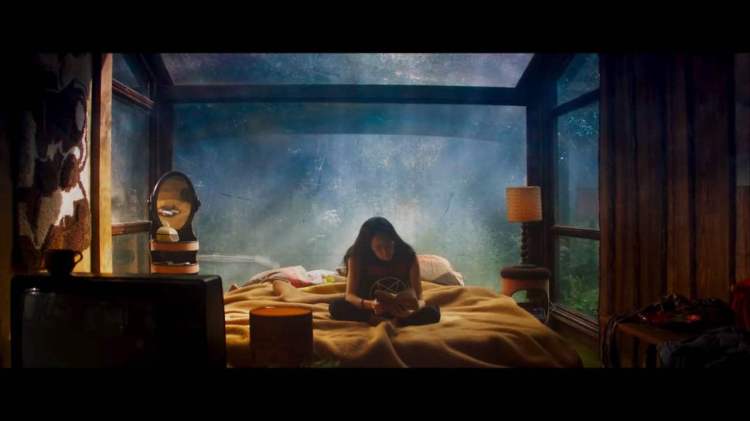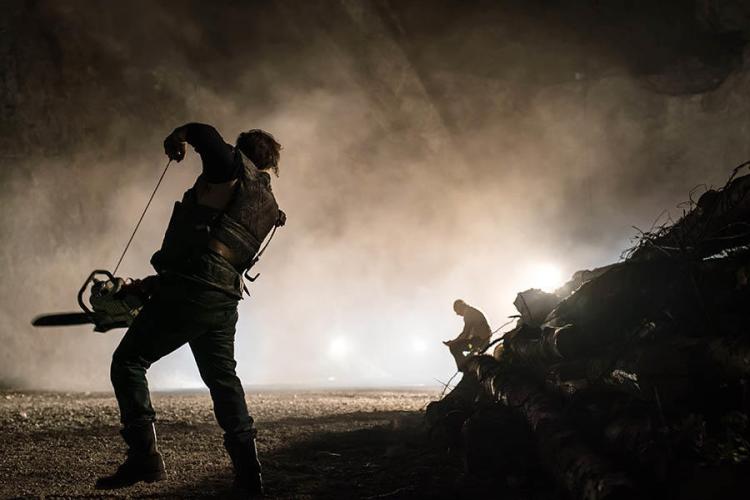
There is obviously a line between contempt for your characters and apathy for your characters and I think writer-director Ari Aster’s debut feature horror film Hereditary has found the thinnest element of that line. It is a movie that is aware of the ugly aspect of what its central family is doing to each other and wants us to be aware too. It is a movie that validates the devastating feelings within these people that is making them react and hurt each other this way, knowing that they are entitled to feel the way they feel and refusing to judge them for it. Only judging them for the toxic manner in which they inflict those feelings on each other. And despite this, it is a movie that does not care what happens to them and knows that the results are of their own devices for the most part.
Hereditary’s happens to be quite a movie that it is easy to spoil by discussing its premise, so I hope it suffices simply to acknowledge that it all begins with a death in the Graham family: Ellen Leigh’s (a character we see in photos that, last I checked, were uncredited) obituary is the first thing that greets us in a chillingly neutral tone. She is survived by her daughter Annie (Toni Collette), Annie’s husband Steven (Gabriel Byrne), their teenage son Peter (Alex Wolff), and child daughter Charlie (Milly Shapiro) and their responses to her death is complex, to say the least. Annie had a toxically antagonistic relationship with her mother amplified by mental illness issues between Annie’s father and brother while by all accounts Ellen took a special interest towards Charlie.
In any case, having to deal with a death in the family is a tough experience and very soon Hereditary proves that to only be the beginning of their troubles, with an incident that irreparably tears a conflict between a slowly deteriorating Annie and an increasingly vulnerable Peter. And between the two of those are the heightened poles of Hereditary’s miseries: Collette embodies an inability to compartmentalize between her hate, her grief, and her trauma, spitefully lashing out at everyone’s who is even slightly at fault for her losing herself. While Wolff goes through a downward spiral of muting out any of his emotions and letting himself get eaten more and more. Indeed, his big showcase is a moment where he stares at an unseen thing in the backseat of a car and stares out trying to comprehend what just occurred, refusing to frown or scream or anything except let a solitary tear run down his cheek. Meanwhile, Byrne makes a useless character feel even more like a clueless slump (which I wholly mean as a compliment) and Shapiro gives Charlie a melancholy loneliness at losing the family member she most interacted with that plays very well with the other weird ambiance she gives to her presence.

And they have a lot of time to do it. Hereditary knows full well what happens when you have the worst feelings a person could possibly be experiencing embodied in four different people and left to simmer in four walls for weeks at a time (2 hours in runtime paced incredibly well by Jennifer Lame and Lucian Johnston), mixed around by Charlie Dahan’s deep doomy vibrations of a score. Hereditary IS a horror movie of the supernatural sort (I do not think this is a spoiler though of course explaining how would be), but the real horrifying aspect comes for what this family is putting each other through simply for the fact that they don’t know how to process this or because they don’t feel like they’re allowed to.
The near-invisible delicacy with which Aster condemns the Graham family with only slivers of sympathy despite a loyalty to wide shots of funereal domesticity that give its central drama an empty dollhouse look to it (something Aster wants us to recognize by way of Annie‘s career as a diorama artist and indeed the very first shot after that obituary is a long close-up from an open dollhouse into a 2nd floor bedroom that happens to be Peter’s) and close-ups that accent exactly how ugly it looks for a human being to emotionally collapse. Cinematographer Pawel Pogorzelski uses the wide shots as an opportunity to give the rooms and their inhabitants a subtle wooden brown implying how artificial anything that was holding this home together was while using the close-ups to give shadows (and aided by sweaty makeup) that make the characters look gaunt and their heads facing downwards. Collette is the best aide to this: it feels insulting to call what she’s doing mugging, because there’s so much deeper internalizing than that but she puts on a consistent exhausted frown, escalated in a dinner scene gone wrong where she can’t help ripping Peter apart verbally. She looks like if Shelly Duvall got fucking sick of Jack Nicholson’s shit and decided she didn’t an axe to murder him, just a glare.
It is so effective as chamber-esque thriller and as exercise in ruining the viewer’s day that when Hereditary takes a very-very-late turn to glibness, it is jarring in an unfortunate way (it is not the only time – there is one cutaway shot against a character’s haunting screams that feels a little beyond the pale in cruelty). It also happens to be a moment that utilizes “explain-the-plot” in the worst kind of way, at a point where we are very clear on what has went on unless we weren’t paying attention. That it is the final note in Hereditary does not particularly stain my memory of it, because when you do it right moodiness is going to linger long enough to really mess up any good feelings you could possible grasp.
NB: Good ol’ Dancin’ Daniel Bayer has suggested that you see this movie with an audience and I sure wish I could agree with that if some 305 dickhead didn’t shout “DE PINGA!” at the screen during one of the most silent-inducing moments after an hour of clicking his tongue. Still, I can’t imagine this isn’t a movie where a crowd would be synchronized emotionally so I’d say it see it… with people you know and trust.



